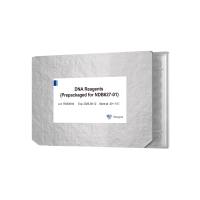mRNA/cDNA Library Construction Using RNAPolymerase Cycling Reaction
互联网
互联网
相关产品推荐

mazF/mazF蛋白Recombinant S_t_a_phylococcus a_u_r_eus mRNA interferase MazF (mazF)重组蛋白Toxin MazF (mRNA interferase MazF)蛋白
¥2328

Recombinant-Synechococcus-elongatus-Photosystem-II-44-kDa-reaction-center-proteinpsbCPhotosystem II 44 kDa reaction center protein Alternative name(s): PSII 43 kDa protein Protein CP-43 Protein P6
¥12880

酶切片段化法DNA建库试剂盒(VAHTS Universal Plus DNA Library Prep Kit for Illumina V2)(ND627/NDB627)
¥6400

SARS-CoV-2 (2019-nCoV) Spike Gene ORF cDNA clone expression plasmid (Codon Optimized)
¥4690

clp1/clp1蛋白/Polyadenylation factor Clp1;Polynucleotide kinase Clp1;Pre-mRNA cleavage complex II protein Clp1蛋白/Recombinant Xenopus laevis Polyribonucleotide 5'-hydroxyl-kinase Clp1 (clp1)重组蛋白
¥69
相关问答

